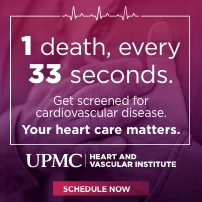December 4th, 2020 by WCBC Radio
The CDC continues to recommend a 14-day quarantine period for people determined to be close contacts to someone with COVID-19 and who do not have symptoms. The 14-day period is the gold standard because it reduces the risk of transmission of COVID-19 to near zero. Transmission commonly occurs even when individuals have no symptoms. Proper quarantine is an essential part of the fight against COVID-19.
Considering the burden a 14-day quarantine places on individuals, the CDC has published two new options for people who must get back to the essential activities in their lives. Each of the other options increases the chances for further transmission of the virus, and because of this, individuals are still required to use meticulous masking, distancing and sanitizing, etc. for the entire 14-day period.
“Western Maryland is currently experiencing a serious surge in cases, hospitalizations and deaths,” said Dr. Jennifer Corder, Deputy Health Officer for Allegany and Garrett Counties. “Opting to shorten quarantine brings increased risks that though small, are real. Individuals should consider the increased risk for possible transmission that goes along with choosing a shorter option. Allegany County and Garrett County Health Departments agree with the CDC that the 14-day quarantine period is the gold standard, and we encourage everyone to meet that standard wherever possible.”
The two new quarantine options apply to people who are close contacts to a confirmed case and who do not have any symptoms.
Option 1: Quarantine for 14 days. The benefit of this option is you know you are protecting others maximally. The risk of transmitting the virus to others is near zero.
Option 2: Quarantine for 10 days. The benefit of this option is that you can return to work and other activities 4 days sooner. The trade-off is you have a .1-10% chance of transmitting the virus to others.
Option 3: Quarantine for 7 days after receiving a negative test day 5 or later. The benefit of this option is that you can return to work and other activities 7 days sooner. The downfall is you have a 5-12% chance of transmitting the virus to others.
For options two and three it is a best practice to still limit non-essential activities for the full 14 days. Symptoms can be very mild and similar to colds and allergies, so caution is urged when considering the use of shorter quarantine periods.





.jpg)













